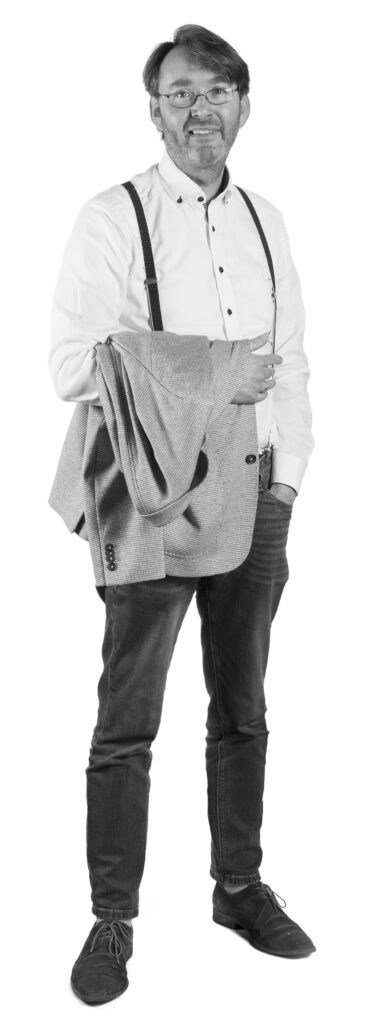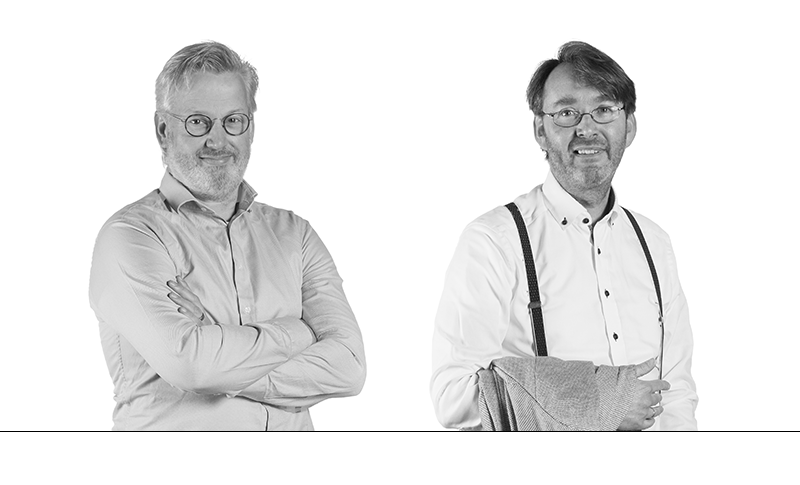The left-wing and right-wing parties in the Lower House of the Dutch parliament take diametrically opposite stands on agricultural policy. This was apparent in the agriculture debate that WUR helped organize. The left stands up for nature and climate targets; the right supports the farmers, the economy, the country’s export position, and business.
Do we have to choose between nature and the economy? Or can these interests be brought together in a shared vision? A debate between Gerard Migchels, a parliamentary candidate for the Christian Democratic Alliance (CDA) and Edo Gies, a supporter of the liberal democratic party D66. Gies works at Wageningen Environmental Research and wants livestock numbers halved; Migchels works at Wageningen Livestock Research and wants to see sustainable agriculture without cutting the numbers.

Gies: ‘I want to put the quality of our living environment front and centre. Agriculture must operate within limits that safeguard the climate, minimize nitrogen emissions, and increase biodiversity. That means an agricultural transition towards extensive farming, using technology and innovation to make farming more sustainable and reduce livestock numbers. Halving livestock numbers, as D66 proposes, is the elephant in the room that right-wing politicians don’t want to talk about. But you won’t create sustainable agriculture with technology alone.’
Migchels: ‘In my vision of the future, there’s a key role for stewardship. We must pass on the Earth to the next generation in a good state, paying attention to people, planet and profit, and therefore staying within the ecological limits. Ammonia emissions have already gone down by 64 per cent in the past 30 years, and in the coming 15 years they should be halved again. Using technical innovations makes that possible. If we phase out artificial fertilizer, and process and apply all the available animal manure, we can farm within the ecological limits and keep the livestock we have now. I want to look for creative solutions within the ecological frameworks. I am an ecomodernist.’
Gies: ‘I don’t know what you base that optimism on, because ammonia emissions haven’t gone done in the last 10 years, whereas there were innovations and measures then too. When the milk quota disappeared, livestock numbers increased immediately. The agriculture sector is always pushing against the ecological boundaries. Now we are setting limits for agriculture with phosphate rights, but we are not achieving the targets for clean air and water. We must bring down the emission ceiling for phosphate and nitrogen, to halt pollution of our living environment.’
Halving livestock numbers is the elephant in the room that right-wing politicians don’t want to talk about
Edo Gies
Migchels: ‘In terms of phosphate, we have almost achieved balanced fertilization, where plants absorb everything we add to the soil. As for nitrogen, the ecologists say we must halve emissions. I think we can do that by rewarding farmers who achieve that target. That way you create a learning environment for farmers. What is more, it is much better and cheaper than buying out a farm here and a farm there. I want to appeal to farmer’s professional skills. And I want to keep the national herd big, because it is needed for innovation and employment opportunities.’
Gies: ‘Surely you could develop technology with a smaller national herd too?’

Migchels: ‘If I propose to dairy farmers that they should only keep dairy cows in places where you can’t easily grow food, as professor of Animal Production Systems Imke de Boer proposes [in her proposal for a new food system written for the Rockefeller Foundation, ed.], they say: in that case I’d better stop. But they could go back to mixed farming with a new approach. Instead of maize, they could grow vegetables and potatoes, for instance, and they could cut down from 120 to 60 cows. They can’t do all that at once, because they’ve got barns that haven’t depreciated yet and a debt with the bank. They need time for this transition, which can easily take a generation.’
Gies: ‘Yes, we need time for that transition and that’s why we must start using all the available instruments now. Which means that as well as technology and innovation, we must reduce livestock numbers. The government can do that subtly by ending livestock rights when farms close, for instance. If livestock numbers are cut by even 20 per cent, we can relax a little on the nature and environment targets. I want clear limits from the government so we can ensure we achieve the goals in time.’
Migchels: ‘I’m not in the least worried about ensuring that, because sensor technology is under development that will let us monitor how fast livestock farming is becoming sustainable. In the Network of Experimental Farms, we are working on continuous measurements of ammonia and methane in barns, which can be linked with farm management. In five years’ time we shall have an IT system with which we can register such environmental services precisely, and reward farmers for them .’
I want to look for creative solutions within the ecological limits. I’m an ecomodernist
Gerard Migchels
Gies: ‘We still need to impose clear limits on agriculture, limits within which farmers can operate. I think the Remkes commission drew up clear limits for livestock farming, but they are much stricter than current government policy.’
Migchels: ‘I am hoping that the implementation of the nitrogen legislation will allow the provinces to set the targets. In each province, farmers, nature managers and citizens can then work out how that can cut down ammonia emissions – in the Achterhoek region or around the former peat colonies, for instance. So, make plans together, rather than setting farmers and other citizens against each other. Like that we can make “people, planet, profit” meaningful.’

 Edo Gies & Gerard Migchels. Photo: Guy Ackermans
Edo Gies & Gerard Migchels. Photo: Guy Ackermans